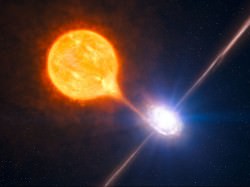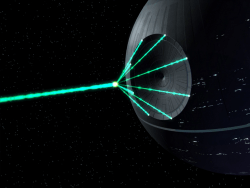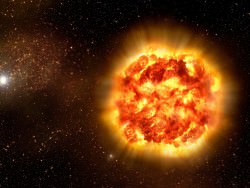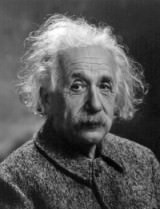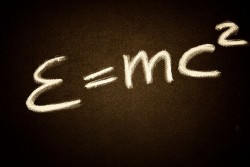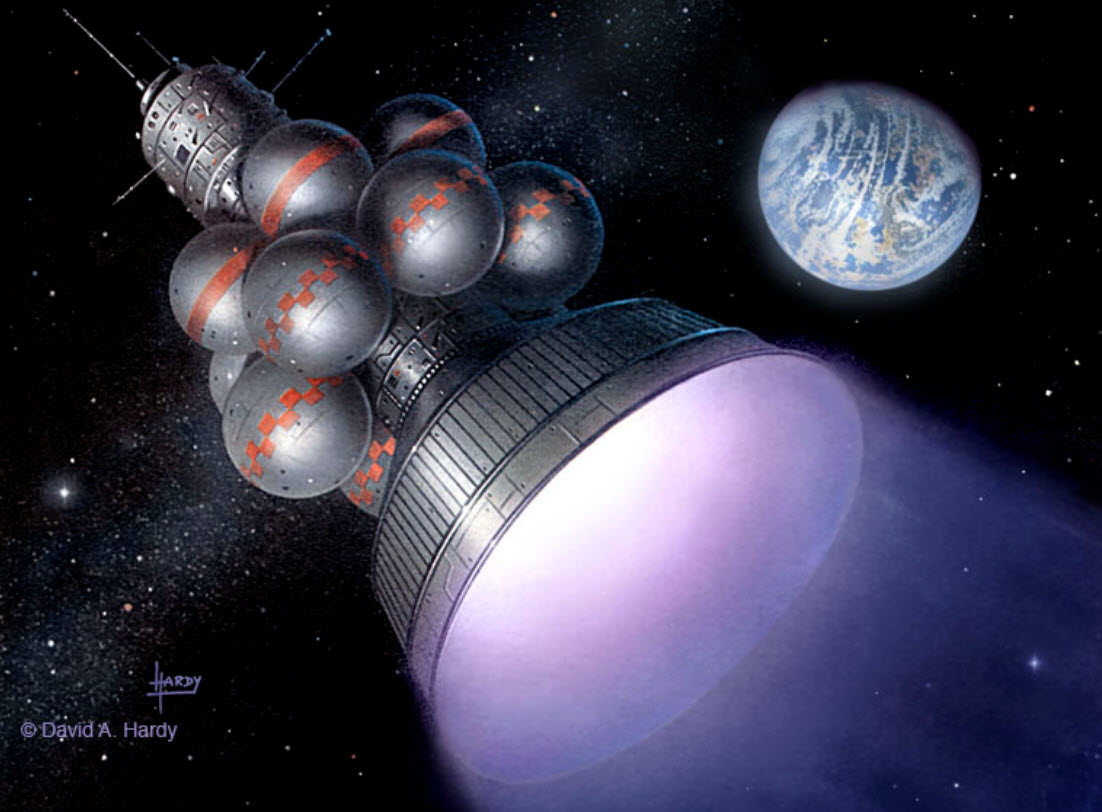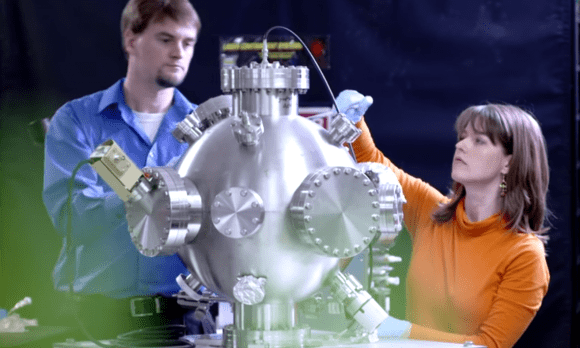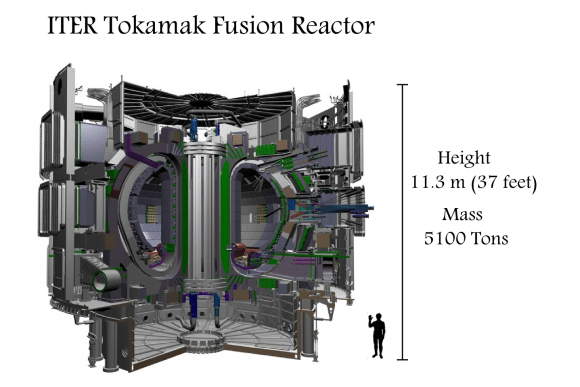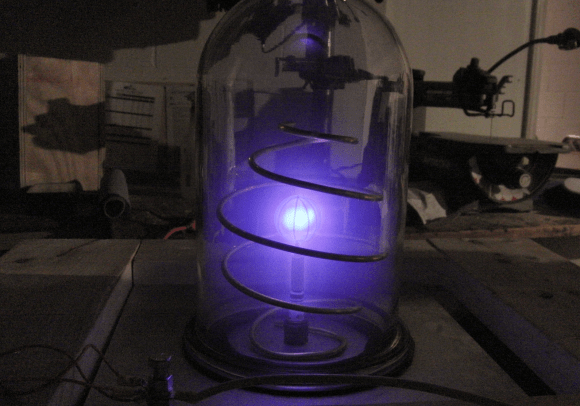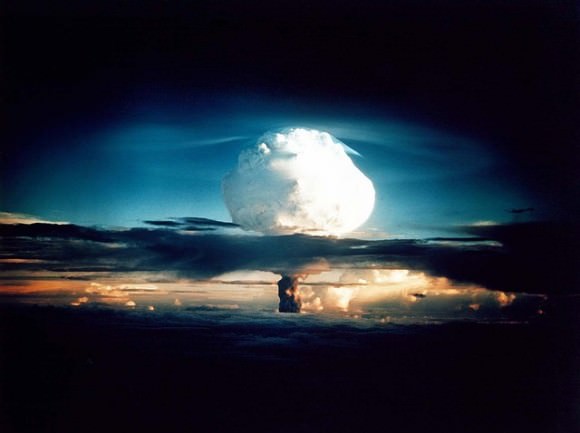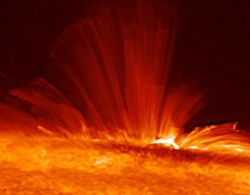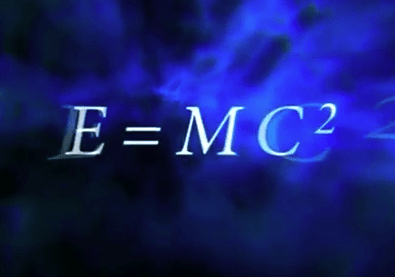We hear that black holes absorb all the light that falls into them. And yet, we hear of black holes shining so brightly we can see them halfway across the Universe. What’s going on? Which is it?
I remember back to a classic episode of the Guide to Space, where I provided an extremely fascinating and concise explanation for what a quasar is. Don’t recall that episode? Well, it was super. Just super. Alright slackers, let’s recap.
Quasars are the brightest objects in the Universe, visible across billions of light years. Likely blanching life from everything in the path of the radiation beam from its lighthouse of death. They occur when a supermassive black hole is actively feeding on material, pouring out a mountain of radiation. Black holes, of course, are regions of space with such intense gravity where nothing, not even light itself, can escape.
But wait, not so fast “recap” Fraser Cain. I call shenanigans. If black holes absorb all the radiation that falls into them, how can they be bright?
You, Fraser Cain of days of yore, cannot have it both ways. It’s either a vortex of total destruction gobbling all the matter and light that fall into them OR alternately light can escape, which still sounds good. I mean, it could be WHERE NO STUFF CAN ESCAPE, except light.
If you’ll admit that you of the past was wrong, we’ll put you in the temporal cone of shame and move on with the episode. Right? Right? Wrong.
Let’s review. Black holes are freaky complicated beasts, with many layers. And I don’t mean that in some abstract Choprian “many connections on many different levels”. They’re a gobstopper from a Sam Neill Event Horizon style hellscape. Let’s take a look at the anatomy of a black hole, and everything should fall into place, including the terror.
At the very heart of the black hole is the singularity. This is the region of compressed matter that used to be a star, or in the case of a supermassive black hole, millions or billions of times the mass of a star. Astronomers have no idea what the singularity looks like or behaves, because our understanding of physics completely breaks down, along with the rest of our brains.
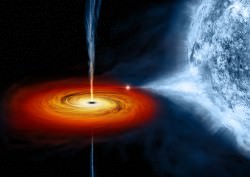
It’s possible that the singularity is a sphere of exotic matter, or maybe it’s constantly compressing down into an infinitely small size. It could also be a pork pie. We’ll never know, because nothing goes fast enough to escape from a black hole, not even light.
Maybe you’d need to be going 10 times the speed of light to escape. Or maybe a trillion times the speed of light. Which makes it easy; as far as we can tell, nothing can go faster than the speed of light, and so nothing is escaping.
As you get further from the singularity, the force of gravity decreases. Initially, it’ll still requires that you go faster than light. You’ll finally reach a very specific point where the escape velocity is exactly the speed of light. This is the event horizon, and it’s a different distance from the singularity with every black hole. That’s the line. Within the event horizon, the light is doomed, outside the event horizon, it can escape. This is the hard candy shell surrounding the chocolately unimaginable nightmare of physics.
So when see bright black holes, like a quasar, we’re not actually seeing light coming from inside the black hole itself or reflected of its surface. What we’re seeing is the material that’s piling up just outside the event horizon. For all its voracious hunger, a black hole’s gravitational eyes are much bigger than its stomach, and it can only feed so quickly. Excess stuff piles up around the black hole’s face and forms a vast disk of material, just like me at a Pizza Hut’s $5 all you can eat buffet. This pizza heats up until it’s like the core of a star, and starts blasting out radiation into space.
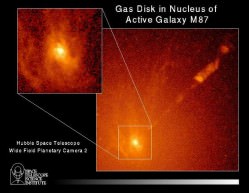
Everything I’ve said is for non-spinning black holes, by the way. Physicists will always make this point with great emphasis. Stay your angry comments astrophysicists, for I have said the magic stone-cutter appeasement code-word, “Non-rotating”.
Of course, black holes do rotate, and can rotate at nearly the speed of light. And this rotation changes the nature of the black hole’s event horizon in ways that make difficult math even harder. All this spinning generates powerful magnetic fields around the black hole, which focuses jets of material that blast out for hundreds of thousands of light-years. When we see these bright quasars, we’re staring right at these jets with our delicate little eyeballs.
So how can we see light coming from black holes when black holes absorb all light? It’s not coming from black holes. It’s coming from the super-heated region of junk all around the black hole. And still, anything that falls through the event horizon, whether it be light, junk, you, me or Grumpy Cat it will never been seen again.
What’s your favorite sci-fi black hole? Tell us in the comments below.
Thanks for watching! Never miss an episode by clicking subscribe. Our Patreon community is the reason these shows happen. We’d like to thank Marcel-jan Krijgsman and the rest of the members who support us in making great space and astronomy content. Members get advance access to episodes, extras, contests, and other shenanigans with Jay, myself and the rest of the team. Want to get in on the action? Click here.



